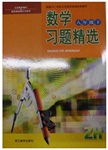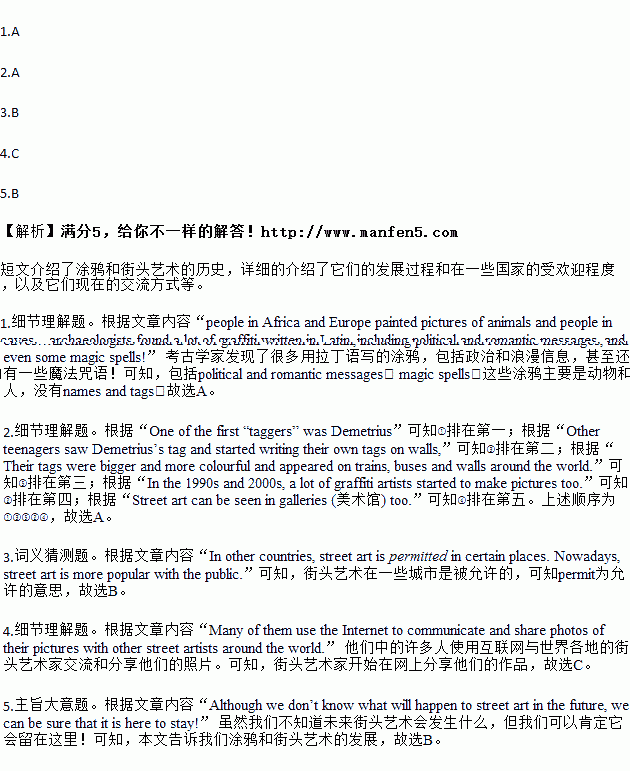题目内容
Painting and writing on walls is nothing new. In prehistoric (史前的) times, people in Africa and Europe painted pictures of animals and people in caves. Graffiti has been found at ancient sites in Greece, Italy, Syria and Iraq. In the Roman town of Pompeii in Italy, archaeologists found a lot of graffiti written in Latin, including political and romantic messages, and even some magic spells!
In the 1970s, young people in New York used pens to write their names, or “tags”, on walls around the city. One of the first “taggers” was Demetrius, a teenager from a Greek family. He wrote his tag on walls in his neighbourhood and in subway stations on the way to school. Other teenagers saw Demetrius’s tag and started writing their own tags on walls, buses and subway trains all over New York. Then, some teenagers stopped using pens and started using paints. Their tags were bigger and more colourful and appeared on trains, buses and walls around the world. In the 1990s and 2000s, a lot of graffiti artists started to make pictures too.
In many countries, it is a crime to paint on walls and street artists can have problems with the police. In other countries, street art is permitted in certain places. Nowadays, street art is more popular with the public. In some cities, there are street art festivals. In Bristol in the UK, there is a street art festival in August every year. Artists paint all the buildings in a street. Lots of people come to watch the artists and take photos. Street art can be seen in galleries (美术馆) too. There have been exhibitions of street art in galleries in Paris, London and Los Angeles.
Most street artists are young people who paint in their neighbourhood or home city. Many of them use the Internet to communicate and share photos of their pictures with other street artists around the world. Although we don’t know what will happen to street art in the future, we can be sure that it is here to stay!
1.Graffiti in ancient times includes different kinds of themes EXCEPT ________.
A.names and tags B.magic spells
C.animals and people D.romantic messages
2.Which is the correct order according to the passage?
① Demetrius wrote his tags on walls.
② Many graffiti artists made pictures too.
③ Other teenagers wrote their own tags on walls.
④ There have been exhibitions of street art in galleries.
⑤ More colourful tags appeared on trains, buses and walls.
A.①③⑤②④ B.①③⑤④② C.④③①②⑤ D.④①③②⑤
3.What does “permitted” mean in Paragraph 3?
A.protected B.allowed C.punished D.warned
4.According to the passage, we can learn that________.
A.Demetrius was the first graffiti artist B.street art can be only seen in the street
C.street artists begin to share their works online D.Bristol holds a street art festival every September
5.The main purpose of the article is ________.
A.to tell why graffiti and street art will disappear
B.to tell the development of graffiti and street art
C.to tell what will happen to street art in the future
D.to tell the relationship between graffiti and street art
 习题精选系列答案
习题精选系列答案
